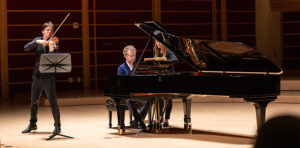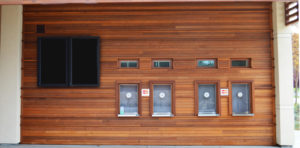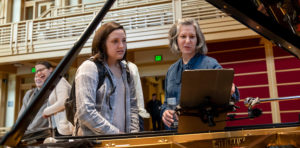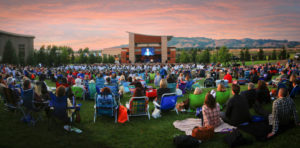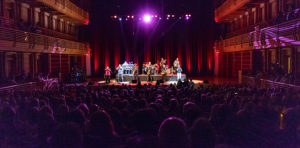About the Organ
Every musical space needs a centerpiece, something for the audience to gaze upon. If the centerpiece is also a source of magnificent sound, so much the better. In the Green Music Center’s Schroeder Hall, that centerpiece is the exquisite Brombaugh Opus 9 tracker organ located above the stage, a wonderful gift made possible through the generosity of donors B.J. and Bebe Cassin, Bob Worth and Margaret McCarthy, and Donald and Maureen Green.
Crafted particularly to carry the sounds of a Bach fugue or a Handel organ concerto, the instrument is the ninth in a series of 66 built by a landmark American organ builder, John Brombaugh. He derived his unique designs from extensive research into the 400-year history of European organs from the Baroque era throughout Germany and the Netherlands.
Brombaugh received degrees in Electrical Engineering from the University of Cincinnati and Cornell University, specializing in the field of musical acoustics. A lifelong lover of classical music, he apprenticed under leading American tracker action pipe organ builders Charles Fisk and Fritz Noack, and served as a journeyman with Rudolph von Beckerath in Hamburg, Germany to complete his training. While living in Europe, he took every available opportunity to study the many historic organs in the region.
By June 1968, Brombaugh had established his own firm in the farmlands west of Germantown, Ohio and eventually partnered with George Taylor, John Boody, and Herman Greunke. These four were the lead builders of the Opus 9, joined by Anne Beattie, John Good, John Schechter, Norman Ryan, Dennis Ostroot, and Karl Oehrtman.
The Opus 9, built in 1972 for the now-shuttered Ashland Avenue Baptist Church in Toledo, Ohio, is a mechanical-action organ which supplies air to 1,248 pipes ranging in size from 16 feet long to some smaller than a pencil. The organ case is built of red oak with accents of rare woods and the metal pipes were hand-made of high lead alloys using techniques similar to 17th-century pipes.
The instrument has 19 stops and 29 ranks on two manual divisions and pedal. The Great is in the main case, and the Ruckpositive is in the small case cantilevered over the stage. Gold leaf adorns some of the beautifully embossed front pipes of the Principal 8.
This unique instrument brought to the American organ scene a number of firsts, which had lasting impacts upon organ building. Among the notable achievements: the sound of hammered lead pipes voiced in the manner similar to that of the Dutch Renaissance; the warm brilliance of the plenum, sounding both forceful and sweet; the use of suspended action in a full-sized instrument, allowing the organist to “play the wind” with increased sophistication; the use of historic well-tempered tuning systems, and the decorative scheme of the case, drawing heavily upon Renaissance traditions.
John Brombaugh moved his firm to Eugene, Oregon in 1977 under the new name of Brombaugh & Associates, Inc. and continued to build exquisite instruments through the summer of 2005. He remains a prolific figure in the organ community, whose impact has had long-lasting effects on both organ building and performance.
In 2005, the organ was purchased for Schroeder Hall—however, with construction not yet completed, the decision was made to relocate the instrument to a temporary home in New York, as the delicate lead-tin alloy pipes of a pipe organ can become misshapen if they sit unused in storage.
Sonoma State University, led by the late Bruce Walker, enlisted the help of George Taylor and John Boody—original partners of John Brombaugh’s in the building of the Opus 9—to install the organ in the newly renovated Sacred Heart Cathedral in Rochester, New York. Once that cathedral’s new organ had been built, the Opus 9 was relocated across town to St. Michael’s Parish, where it remained until early 2014. While in Rochester, the Opus 9 was a favorite organ of professors and students at the nearby Eastman School of Music.
As completion of Schroeder Hall neared, Taylor & Boody restored Opus 9 in their shop in Staunton, Virginia. In the summer of 2014, the organ arrived at Sonoma State University’s Green Music Center in carefully dismantled pieces. Taylor & Boody carried out the assembly and tuning of the instrument over several weeks, preparing the organ for its Schroeder Hall unveiling during the Grand Opening Weekend.
The combination of Brombaugh’s exquisite Opus 9 paired with the intimate design and acoustics of Schroeder Hall, has undoubtedly created a space for organ music to be celebrated at its finest.
